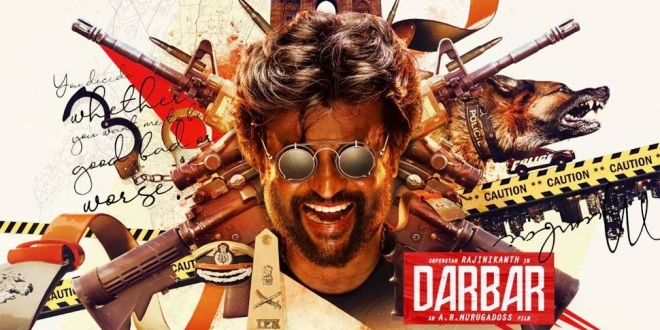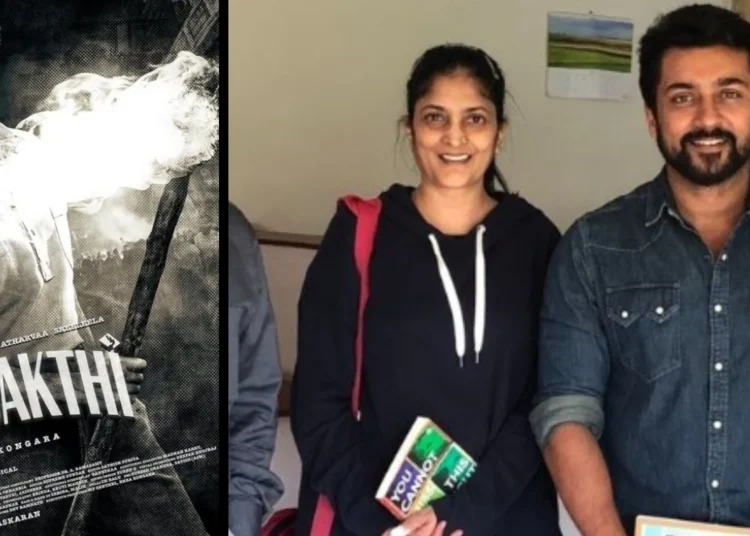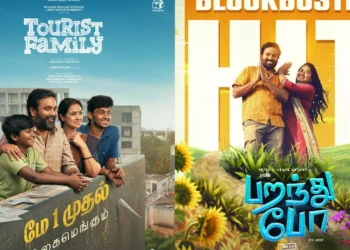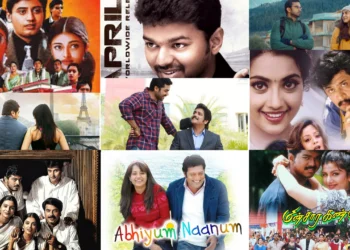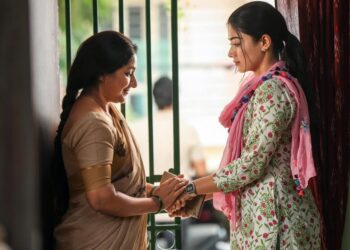This Darbar review contains spoilers…
I can’t recall the last time I felt this way watching a Rajinikanth film. As the end credits of his films roll along, I always take a deep breath, slump back into my seat, sit in the moment and then whip out my phone and send long walls of texts to my family members, all of whom are fellow cinephiles and Rajini veriyans. Now, not all of these text messages are positive. Sometimes I’m rapturous, other times I’m seething as if someone had just slapped my non-existent toddler across the face and sometimes I’m in a state of confusion and the back-and-forth texting soon morphs into a debate. Regardless, I’m always enthused to have a conversation about the film that I had just watched starring the magnetic icon who helped shape my unbending love for cinema.
But not Darbar.
Darbar left me feeling kind of indifferent.
It’s not bad. It’s not good. It just kind of is.
Perhaps it’s because Darbar doesn’t feel like it’s made by a filmmaker, rather it feels assembled by an AI that was programmed to engineer a “Rajini Mass Film.” So we get all that we have come to expect from one of these films — The hero introduction shot, the opening song number, the slow-mo walks, the one-liners — but none of the goosebumps, gravitas, electricity nor the sheer emotion that should underline everything. It’s all 1s and 0s. Style without a beating heart at its centre.
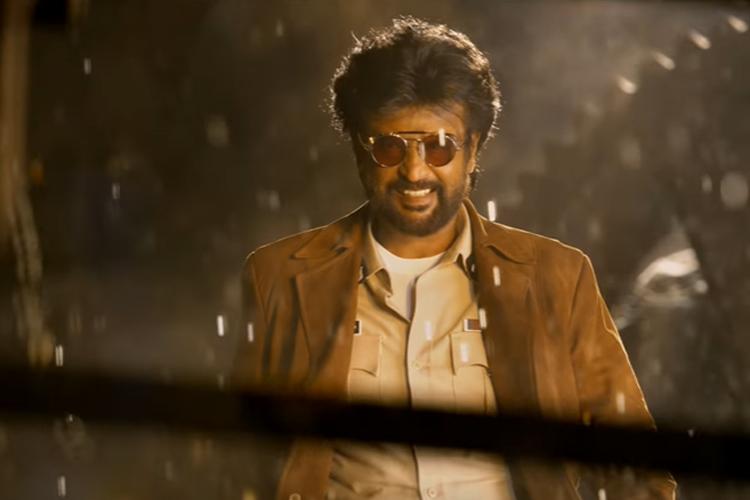
A.R. Murugadoss has mentioned that Darbar, similar to Petta is very much a “fan-boy” made film. A film he has envisioned making since he was a teenager breaking down barriers to buy FDFS tickets to see Thalaivar on the big screen. And a lot of the problems I have with Darbar — mainly the over-reliance on Rajinisms — I had with Petta (at least the first half of it) as well.
The difference is, Petta is helmed by Karthik Subbaraj, a ridiculously gifted young writer and a red-blooded craftsman with his own cinematic language. Like Vetrimaaran, Subbaraj gives us so much to chew on, so much to relish even in his lesser films. So far, at least. The non-stop Rajini glorifying scenes in the first half of Petta are infused with an insurmountable amount of inextinguishable passion and is so rich in detail that you couldn’t help but be in awe of it all despite wondering if there’s a point to any of it beyond #RajiniSwag.
A.R. Murugadoss tries to replicate some of that. But he’s not Karthik Subbaraj. I’ve come to realise, especially after Darbar that he’s a (much) better version of say, K.S. Ravikumar. Every now and then, they’ll make a Kaththi / Padayappa and the rest of the time we’ll be watching their films wondering if they’ll ever recapture the magic of Kaththi / Padayappa.
So when I watched the terribly bland and comical hero-introduction scene in Darbar, I couldn’t help but think to myself, “can you even compare Rajini’s shadow in Darbar to Rajini’s shadow in Petta?” If Petta is a love letter to old school Rajini, Darbar is a love WhatsApp message at best.
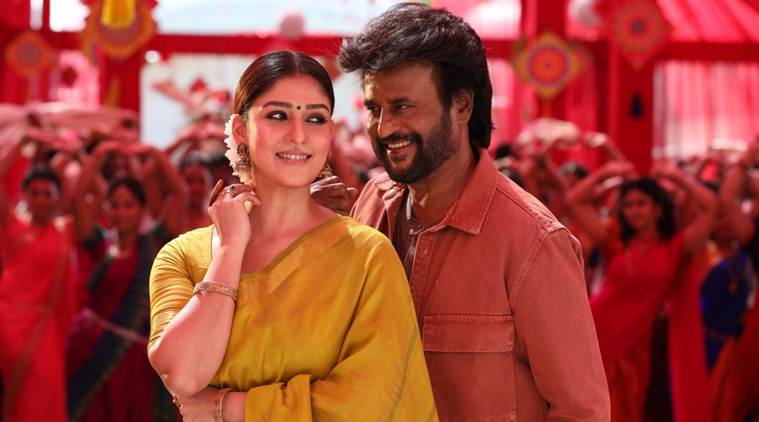
The bummer is, Darbar actually has a solid premise. In a sentence, it sounds like the Rajini movie we’ve been dying to see for ages: An ageing rogue cop starts thirsting for revenge after the death of his daughter. Insert some Anirudh crackers, family sentiment, punch dialogues and the superstar of all superstars and we could’ve gotten Tamil cinema’s version of Taken. But this logline isn’t developed into a mouth-watering screenplay.
Darbar is filled with odd writing choices. We learn about the death of his daughter very, very early on through some poorly delivered expository lines. Then we cut to a flashback (that makes up the bulk of the movie) which eventually leads up to that death. But because we already know it’s coming it doesn’t feel shocking nor as emotional as it could’ve been. I can’t for the life of me figure out why Murugadoss opted to go with this structure.
There also isn’t a stark difference between Adithya Arunachalam (Rajini) pre and post the death of his daughter despite a bunch of the characters telling us otherwise. A human rights officer who’s supposedly a long-time acquaintance of Mr. Arunachalam is (unintentionally comedically) shaken by his vigilante methods. “He’s a completely different man!” she says. “It’s because they killed his daughter,” the characters around her respond. But even during the flashback sequences in which his daughter is alive, we see that he’s more than happy to take the law into his own hands.
In a number of pre-release interviews, A.R. Murugadoss spoke about the importance of a villain, especially in a mass film. “A villain can make or break a film. A story should revolve around a villain. A hero simply reacts to the villain.” So, why then, I wonder, does Suniel Shetty only have less than 20 minutes of screentime? And why does he, in that 20 minutes of screentime, just walk around either scowling or has his lips puckered and neck slightly bent as if on a set of a Vogue photoshoot? This isn’t his fault of course. What can an actor do if the material he’s working with is shallower than a river during the drought? Don’t even get me started on the baffling plot twist that introduces Suniel Shetty’s character in the first place.
A.R. Murugadoss also mentioned that it was both necessary and important for the film to be set in Mumbai. But watching it, you can’t help but wonder what is the “importance” he was referring to. Here, Mumbai isn’t a character the same way North Chennai is in Vada Chennai or Dharavi is in Kaala. It’s just an excuse for Murugadoss to cast Hindi actors to increase the film’s box office potential. That isn’t the issue. The issue arises when the Northern actors are all speaking (horrendously dubbed) Tamil. It’s cringeworthy, it’s distracting and it makes no sense within the narrative. Why do a lot of mainstream Tamil filmmakers behave like subtitles are the rarest of gems that can only be obtained and used after trekking through the Forbidden Forest for seven hours and battling a horde of angry Centaurs? Original language plus subtitles, that’s gospel.
How are the action sequences? It’s fine, I guess. Some of them are creatively staged and shot. At one point Murugadoss spins the camera 180 degrees as Adithya hits a thug. It looks cool. But without an emotional driving force, no amount of camera spinning is going to make us (or at least me) jump out of our seats.

But in a film that threatens to fall apart at every turn, there are a number of things to love about it as well. Moments and scenes that edges Darbar into ‘mediocre’ territory. Like the scene when Adithya Arunachalam regains consciousness after a severe concussion only to discover that his daughter has passed. Adithya loses it and Rajini performs his heart out. We’ve seen Rajini characters angry many times, but here it’s different. It isn’t just anger, it’s also pain, sadness and disorientation.
I also love the quick scene where Adithya almost collapses in the hospital in front of his subordinates. They try to help him up, he stops them, choosing to get up himself. He believes it in his bones: Adithya Arunachalam is unstoppable. The overconfident exterior mixed with the reality of his vulnerable state is something we don’t often see in mass movies. There’s an interesting subplot where he’s asked to resign/retire after an accident for not being in tip-top shape both physically and mentally. But why does this angle need to end with a cheap-looking Rocky-like gym montage which sees Adithya attain peak fitness after merely four days? Couldn’t he have failed the physical test as Bond did in Skyfall?
Then there’s Nayanthara. While she isn’t utilised to her fullest potential at all — my God, is she severely underutilised — the climax of her romance angle with Adithya is a masterful stroke of pure genius.
Lily’s (Nayanthara) cousin visits him at home. There’s sort of an awkward tension in the air. You know what’s going to happen next. The cousin is going to tell Adithya that he loves her, that Adithya should stay away from her, and Adithya would look at him straight in the eye, smile and say, “Kanna…” Right?
Wrong.
The cousin looks at a picture of Adithya receiving an award from a Minister in 1998, congratulates him and then casually says “Lily was 11 years old at the time.” Later he asks Adithya how he would feel if his daughter started dating someone of his age. A.R. Murugadoss takes a sharp jagged knife much like the one used by the Suniel Shetty character and drives it through our hearts. Adithya holds back his tears, says he understands, explains himself, apologises and promises not to woo Lily anymore. In a movie filled with so much nothingness, this is one that feels real and sincere. It’s a powerful moment.
If only this moment was part of a better movie. If only this moment wasn’t underscored by a close-up shot in which we see Rajini’s face, shiny, covered in makeup as thick as the Mahabharata and an Instagram quality de-ageing filter. Does Murugadoss not realise the irony of it all? Or perhaps he’s directing that line towards himself as well. Seriously, are we not done with Rajini playing a man 30 years younger? Are we not salivating for more Kaala Karikalans and Kabalis?

The best moments in Darbar are the tender ones. The lighthearted and frankly wonderfully penned humour with Yogi Babu (there’s a running joke about Rajini wearing a watch that monitors his heart rate… because of his age), the father-daughter dynamic (Nivetha Thomas holds her own alongside Rajini) and the family drama. It’s a shame that all of this is buried underneath a highly forgettable, incredibly generic, poorly written action flick. Well, at the very least this isn’t a film where the hero looks directly into the camera and spews some moral values or tells us the importance of farming. Bonus points for that.
Darbar is currently playing in Malaysian cinemas.
Follow us on Instagram, Facebook or Telegram for more updates and breaking news.


